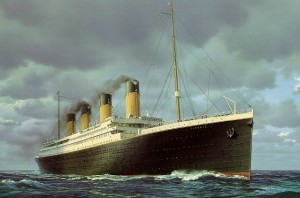 Lo and behold, we’ve nearly reached the centennial of the Titanic’s sinking (let’s hope the world doesn’t end next December 31), and not only will 2012 witness the 3-D re-release of James Cameron’s Titanic, but the worldwide premiere of Julian Fellowes’ Titanic (trailer here), and hopefully the airing of Titanic: Blood and Steel. The most prevalent source of Titanic lore will be, of course, books. I’ve browsed through the jungles of Amazon.com so you won’t have to, and next spring promises a spate of books ranging from sober non-fiction, to popular narratives, to plucky romances aboard the ship, to interesting mash-ups. I will include the descriptions if possible.
Lo and behold, we’ve nearly reached the centennial of the Titanic’s sinking (let’s hope the world doesn’t end next December 31), and not only will 2012 witness the 3-D re-release of James Cameron’s Titanic, but the worldwide premiere of Julian Fellowes’ Titanic (trailer here), and hopefully the airing of Titanic: Blood and Steel. The most prevalent source of Titanic lore will be, of course, books. I’ve browsed through the jungles of Amazon.com so you won’t have to, and next spring promises a spate of books ranging from sober non-fiction, to popular narratives, to plucky romances aboard the ship, to interesting mash-ups. I will include the descriptions if possible.
The Time Travel Journals: Shipbuilder by Marlene Dotterer (August 29, 2011)
Imagine being there before the Titanic set sail.
Now imagine being there before she’s even built.
Sam Altair is a physicist living in Belfast, Ireland. He has spent his career researching time travel and now, in early 2006, he’s finally reached the point where he can send objects backwards through time. The only problem is, he doesn’t know where the objects go. They don’t show up in the past, and no one notices any changes to the present. Are they creating alternate time lines?
To collect more data, Sam tries a clandestine experiment in a public park, late at night. But the experiment goes horribly wrong when Casey Wilson, a student at the university, stumbles into his isolation field. Sam tries to rescue her, but instead, he and Casey are transported back to the year 1906. Stuck in the past, cut off from everyone and everything they know, Sam and Casey work together to help each other survive. Then Casey meets Thomas Andrews, the man who will shortly begin to build the most famous ship since Noah’s Ark. Should they warn him, changing the past and creating unknown consequences for the future? Or should they let him die?
The construction of White Star Line’s Olympic-class ships forms the backdrop for a passionate love affair between Tom and Casey, who must overcome the many differences inherent between an Edwardian Irish gentleman, and a member of America’s Generation Y. The fictional love affair grows alongside real lives from history: the Andrews family of Comber, Lord William Pirrie, Bruce Ismay, and the thousands of skilled men who built the remarkable ocean liners of the early twentieth century.
Smashwords & Kindle
Titanic: One Newspaper, Seven Days, and the Truth That Shocked the World by Stephen Hines (September 1, 2011)
The Titanic was the greatest ocean liner ever built and the news of its sinking 5 days into its maiden voyage, shocked the world. Captivated by the tragedy, audiences turned to the trusted Daily Telegraph hoping to find answers to questions of how the “unsinkable ship” could have ever gone down. Misinformation and erroneous reports of what exactly happened to the Titanic were numerous, and it was up to the Telegraph reporters to determine the truth. Focused entirely on media clippings and reporting from the time of the tragedy, Titanic is a ripped-from-the-headlines account of the sinking of the world’s largest ship.
How to Survive the Titanic: Or, the Sinking of J. Bruce Ismay by Frances Wilson (October 11, 2011)
Books have been written and films have been made, we have raised the Titanic and watched her go down again on numerous occasions, but out of the wreckage Frances Wilson spins a new epic: when the ship hit the iceberg on April 14, 1912, and one thousand men, lighting their last cigarettes, prepared to die, J. Bruce Ismay, the ship’s owner and inheritor of the White Star fortune, jumped into a lifeboat filled with women and children and rowed away to safety.
Accused of cowardice and of dictating the Titanic’s excessive speed, Ismay became, according to one headline, “The Most Talked-of Man in the World.” The first victim of a press hate campaign, he never recovered from the damage to his reputation, and while the other survivors pieced together their accounts of the night, Ismay never spoke of his beloved ship again.
In the Titanic’s mail room was a manuscript by that great narrator of the sea, Joseph Conrad, the story of a man who impulsively betrays a code of honor and lives on under the strain of intolerable guilt. But it was Conrad’s great novel Lord Jim, in which a sailor abandons a sinking ship, leaving behind hundreds of passengers in his charge, that uncannily predicted Ismay’s fate. Conrad, the only major novelist to write about the Titanic, knew more than anyone what ships do to men, and it is with the help of his wisdom that Wilson unravels the reasons behind Ismay’s jump and the afterlives of his actions.
Using never-before-seen letters written by Ismay to the beautiful Marion Thayer, a first-class passenger with whom he had fallen in love during the voyage, Frances Wilson explores Ismay’s desperate need to tell his story, to make sense of the horror of it all, and to find a way of living with the consciousness of lost honor. For those who survived the Titanic, the world was never the same. But as Wilson superbly demonstrates, we all have our own Titanics, and we all need to find ways of surviving them.
The Titanic Pocketbook: A Passenger’s Guide by John Blake (Oct 15, 2011)
Launched in May 1911, the triple-screw steamer Titanic was the pride of the White Star Line and at that time the largest passenger ship in the world. Built to carry passengers in comfort and luxury on the lucrative transatlantic route, her design, fittings and on board facilities epitomized the spirit of the age in terms of elegance and style. Cuisine was advertised as the equal of Europe’s top restaurants, while libraries, state-rooms and cabins were decorated in a range of architectural styles to appeal to the tastes of the most discerning passenger.
The Titanic Pocketbook is a unique guide to all these aspects of this great ship, incorporating authentic period literature from sources including White Star Line themselves, Harland & Wolff shipyards, and important publications from the period.
Titanic: The Unfolding Story as told by the Daily Mirror by Richard Havers (November 1, 2011)
This book offers a unique insight into this terrible, yet endlessly fascinating, disaster. It tells the whole story from the commissioning of the Titanic and her sister ship the Olympic following their construction, launches and maiden voyages, through to the Titanic’s demise, the immediate aftermath, and the very public enquiries on both sides of the Atlantic. Based on the words of contemporary newspaper reports the story comes alive as it never has before. The depth of detail is fascinating, revealing fresh insights into a tragedy that continues to captivate us today. Use of contemporary newspaper photography and iconic images all help to make this book one of a kind.
A Rare Titanic Family: How the Caldwells Survived the Sinking and Traveled the World by Julie Hedgepeth Williams (Jan 1, 2012)
Of all the families that boarded the doomed ocean liner Titanic together in 1912, only one-fourth arrived safely in New York together. Albert and Sylvia Caldwell and their 10-month-old son, Alden, were one of those rare Titanic families. A Rare Titanic Family draws on first-person accounts from Albert and Sylvia to tell the fascinating story of the young couple who had no intention of getting off the “unsinkable” Titanic. It was, as Sylvia had been told, a ship that God Himself could not sink. They were saved by a combination of luck, pluck, Albert’s outgoing nature, Sylvia’s illness, and Alden’s helplessness. Their detailed story of the short life of the Titanic and their lucky rescue aboard the ill-starred Lifeboat 13 has never been fully told in Titanic literature. A Rare Titanic Family includes a photo taken of them on deck–an unusual surviving souvenir sent to them after the disaster.
But the trip on the Titanic was only one part of a bigger nightmare for the Caldwells. Albert and Sylvia, idealistic young Presbyterian missionaries from the American Midwest, had set out to Bangkok, Siam, on the very day of their wedding in 1909, eager to serve God and see the world. But things went awry. In the end, they fled Bangkok in what they describe as a desperate journey around the world to save Sylvia’s health. Fellow missionaries, however, believed that the couple had been plotting for some time to renege on their contract and contrive an excuse to go home early, at great financial loss to the church. The trip around the world thus developed into a grim game of cat and mouse, with the Caldwells as the prey. Not even the loss of the Titanic ended the hunt. A Rare Titanic Family follows all the true-life plot twists in a biographical account of a family that successfully fled aboard the Titanic but never could get out from under the shadow the ship cast over them.
Voyagers of the Titanic: Passengers, Sailors, Shipbuilders, Aristocrats, and the Worlds They Came From by Richard Davenport-Hines (Mar 6, 2012)
At 11.40 p.m. on April 14, 1912, the RMS Titanic, on her maiden voyage from Southampton, England, to New York City, struck an iceberg in the north Atlantic 400 miles south of Newfoundland. In less than three hours, 1,517 people—more than two thirds of the men, women, and children aboard—perished as the passenger ship, the largest in the world at that time, broke up and sank into the freezing waters.
On the centennial of this legendary tragedy, Richard Davenport-Hines adds a new dimension to the story, focusing on the Titanic’s voyagers, from the privileged in first class—plutocrats, society matrons, and captains of industry—to the poor immigrants in the cramped steerage decks on their way to a new life in America. Davenport-Hines makes flesh and blood such well-known figures as John Jacob Astor IV, the wealthiest man on the ship, and Archibald Butt, Theodore Roosevelt and William Taft’s beloved military aide who helped others to survive. Here, too, are the myriad middle and lower-class passengers: clergymen, teachers, hoteliers, engineers, clerks, and others aboard that fateful day. Davenport-Hines also explores the fascinating politics and personalities behind the Titanic’s creation, including larger-than-life men such as J.P. Morgan, the ship’s owner, and Lord Pirrie, its builder.
Illustrated with thirty-two pages of black-and-white photographs, Voyagers of the Titanic illuminates the human legacy of this terrible tragedy—the heroism and sacrifice, hope and love—and reveals the meaning it holds for us to this day.
Titanic Tragedy: A New Look at the Lost Liner by John Maxtone-Graham (Mar 19, 2012)
The dean of ocean liner historians uncovers fascinating and unknown aspects of this epic disaster.
This is a book unlike any other. Rather than offering simply a detailed retelling of the Titanic sinking on her maiden voyage, John Maxtone-Graham devotes his considerable knowledge and impeccable prose to a discussion of salient, provocative, and rarely investigated components of the story, including dramatic survivors’ accounts of the events of the fateful night, the role of newly in-vented wireless telecommunication in the disaster, the construction and its ramifications at the famous Harland and Wolff shipyard in Belfast, and the dawn rendezvous with the rescue ship Carpathia. Richly written and vividly detailed, this is the book Titanic buffs have been waiting for.
Gilded Lives, Fatal Voyage: The Titanic’s First Class Passengers and Their World by Hugh Brewster (Mar 27, 2012)
The wealthy and glamorous passengers who boarded the Titanic, history’s most famous ship, provide “an exquisite microcosm of the Edwardian era.” But in most books about the doomed voyage, their stories are incidental to the ship’s collision with an iceberg on April 14, 1912.
Hugh Brewster, who created several bestselling books on the Titanic, here uses original research to intertwine, for the first time, their lives within the powerful arc of the ship’s dramatic demise.
The cast includes artist and writer Frank Millet, the Director of Decorations for the 1893 Chicago World’s Fair; White House aide Archie Butt; John Jacob Astor and Benjamin Guggenheim; and Lady Lucile Duff-Gordon, a leading couturiere, among others. Through these vivid characters, we gain insight into the arts, politics, culture, and sexual mores of a world both distant and near to our own.
All converge on the boat deck of the Titanic during the ship’s final hours and we become witnesses to a heartbreakingly poignant scene where some survive and some do not.
The final chapters recount the rescue of the passengers in lifeboats by the Carpathia and the trip back to New York with only 705 of the more than 2,200 on board. Some men who survived lived under a cloud of cowardice. Others left a remarkable legacy that leads us to art collector Peggy Guggenheim whose father died when the Titanic sank, or to philanthropist Brooke Astor, daughter-in-law of John Jacob Astor, and how the circumstances of her recent death became “the last Astor scandal.”
The Titanic is one of the most enduring stories of all time. The focus on it will be intensified for the 100th anniversary of its sinking on April 14/15, 2012 for which hundreds of commemorative events are being scheduled.
Love, Break, Service, Victory: A Tale from the Titanic by Lindsay Gibbs (Apr 1, 2012)
Based on a stirring and remarkable true story, this work of historical fiction tells of the intertwined life of Dick Williams and Karl Behr who survived the sinking of the Titanic and went on to have Hall of Fame tennis careers. Two years before they faced each other in the U.S. Championships, the two men boarded the infamous ship as strangers. Dick, shy and gangly, was moving to America to pursue a tennis career. Karl, a dashing tennis veteran, was chasing after Helen, the love of his life. When tragedy struck and the unsinkable ship began to do so, the two men met dramatically on board the rescue ship Carpathia and leaned on each other—literally and figuratively—to survive those few days before reaching land. But as they reached the shores of the United States, they both did all they could to distance themselves from the disaster, until a fateful 1914 U.S. Championships draw forced them to face each other once again. An emotional and touching work, this novel seamlessly weaves history and fiction with themes of love, friendship, and above all perseverance.
A Hymn for Eternity: The Story of Wallace Hartley, Titanic Bandmaster by Yvonne Carroll (April 1, 2012)
The life story of the leader of the band who played on as the Titanic went down
Yvonne Carroll has spent years researching the life story of Wallace Hartley, including conducting interviews with remaining members of his family. The band playing “Nearer my God to Thee” as the ship went down is probably one of the most famous stories relating to the Titanic. The bravery of the band and their leader, Wallace Hartley, is one of the endearing stories to come out of the worst disaster to happen to a British passenger liner. Who comprised the band? Who was Wallace Hartley and where did he come from? Not much has been written about this enigmatic band leader or of his part in the tragedy, beyond a few mentions in the many books on the disaster, but he was one of the most important characters in the story of Titanic. Here, the author tells his story and remembers this hero about whom so little has been known.
And the Band Played On: The Titanic Violinist and the Glovemaker: A True Story of Love, Loss and Betrayal by Christopher Ward (Apr 1, 2012)
The amazing true story of one of the band members who famously played as the Titanic sank, written by his grandson
On April 14, 1912, when the Titanic struck an iceberg on her maiden voyage and sank, 1,500 passengers and crew lost their lives. As the order to abandon ship was given, the orchestra took their instruments on deck and continued to play as the ship went down. The violinist, 21 year-old Jock Hume, knew that his fiancée, Mary, was expecting their first child, the author’s mother. A century later, Christopher Ward reveals a dramatic story of love, loss, and betrayal, and the catastrophic impact of Jock’s death on two very different Scottish families. He paints a vivid portrait of an age in which class determined the way people lived—and died. This outstanding piece of historical detective work is also a moving account of how the author’s quest to learn more about his grandfather revealed the shocking truth about a family he thought he knew, a truth that had been hidden for nearly 100 years.
The Time-Traveling Fashionista On Board the Titanic by Bianca Turetsky (April 3, 2012)
What if a beautiful vintage dress could take you back in time?
Louise Lambert has always dreamed of movie starlets and exquisite gowns and longs for the day when she can fill the closet of her normal suburban home with stylish treasures. But when she receives a mysterious invitation to a vintage fashion sale in the mail, her once painfully average life is magically transformed into a time-travel adventure.
Suddenly onboard a luxurious cruise ship a hundred years ago, Louise relishes the glamorous life of this opulent era and slips into a life of secrets, drama, and decadence. . . . Dreamy and imaginative, The Time-Traveling Fashionista features thirty full-color fashion illustrations to show gorgeous dresses and styles throughout history.
Titanic: The Death and Life of a Legend by Michael Davie (Apr 3, 2012)
Reprint of 1987 release. Tells the story of the Titanic from its construction to the discovery of its wreckage and describes the social and emotional impact of its sinking
What Sank the World’s Biggest Ship?: And Other Questions About the Titanic (Good Question!) by Mary Kay Carson and Mark Elliott (Apr 3, 2012)
Why was the Titanic so huge? Did all the passengers really eat off gold plates? How could an iceberg just appear out of nowhere? Here are the answers to all these and other “must-know” questions about the building, launch, and tragic sinking of the most famous ship of all time. This trivia-rich look back on that fateful night includes gripping, true information that will entice young readers–even if they don’t have to write a book report!
The Myth of the Titanic: Centenary Edition by Richard Howells (Apr 24, 2012)
Why does the story of the Titanic retain such a hold on the popular imagination, one hundred years after it sank on the night of 15 April 1912? Howells explores the myths around the Titanic legend, showing what they reveal about the culture of their time, as well as the role that myth still plays in our lives today.
Titanic Century: Media, Myth, and the Making of a Cultural Icon by Paul Heyer (Apr 30, 2012)
The Titanic’s fate is still very much in our collective consciousness. A catastrophe that was unimaginable at the time, now 100 years later it continues to provide lessons that we have not yet fully absorbed. And the debate continues regarding how the loss of life might have been averted—could, for example, the nearby ship, Californian, have rescued everyone on board Titanic?
The book examines the relationship between a momentous historical event, the media that have been involved in reporting and re-presenting it, and the subsequent transformation of the disaster into an enduring myth in contemporary popular culture. The book will also show how the sinking of the Titanic helped make Guglielmo Marconi a household name; set David Sarnoff on the path that led to his becoming head of RCA; raised the stature of The New York Times to the eminence it has today; and helped give film director James Cameron his current notoriety and influence.
Titanic Rhapsody: A Novel by Jina Bacarr
Titanic Rhapsody is the story of Katie O’Reilly, an enterprising Irish lass who takes the place of the Countess of Marbury when the Titanic sinks, and how a dashing gambler, a wealthy industrialist and a bet made between them changes her life. Katie rises to the heights of New York Society–only to see it all threatened fifty years later when her secret is revealed…

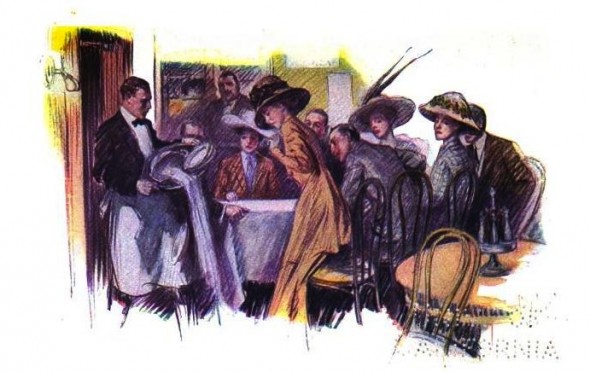
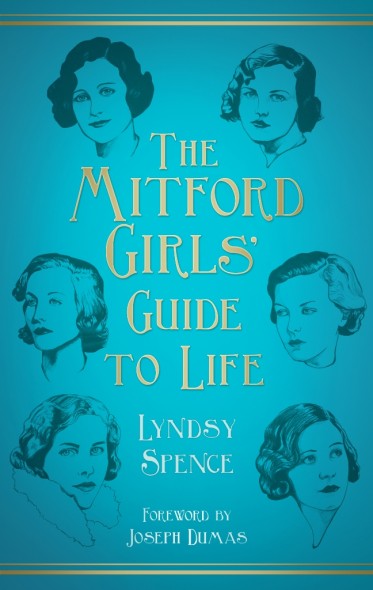
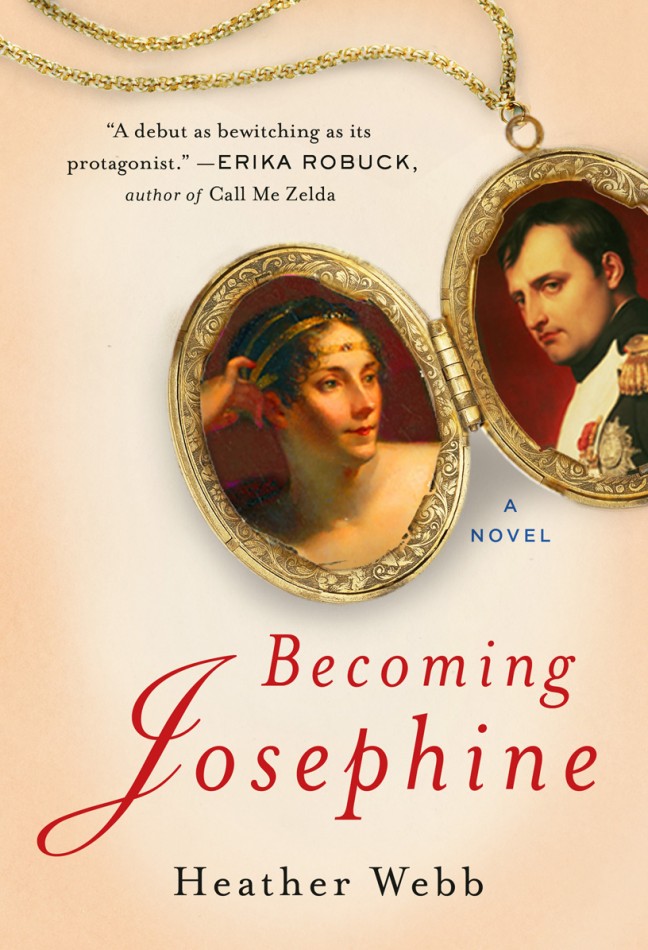
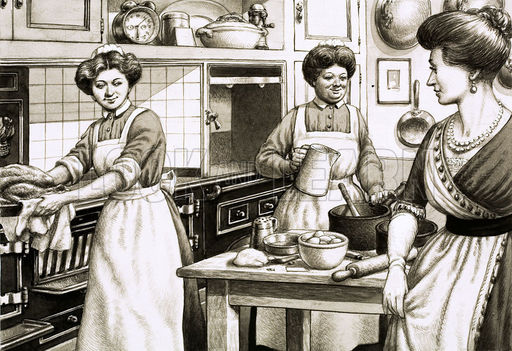
That’s a wonderful list. Thank you! But I’m near tears because your Amazon search evidently did not bring up my book, The Time Travel Journals: Shipbuilder.
I will try to figure out why it’s not coming up. Is it because “Titanic” is not in the title? I do have it as a keyword, but perhaps that’s not enough.
Oh no! I think it is because Titanic isn’t in the title, but I’ll add your book to the list. 😉
That’s very sweet of you. I think I was whining, and I try not to do that on other people’s blogs. Such bad manners…
After I saw your post, I did a search myself on Amazon. After 39 pages of books with “Titanic” in the title, mine still hadn’t showed up! I had to search on both Thomas Andrews and Titanic, before I got it. This is a real learning experience.
I wanted to let you know that I truly enjoy your blog. I wish I’d known about it when I was researching for my book. You have so much detail and information. It’s wonderful!
Oh no, you weren’t whining–a legitimate sense of dismay in my book!
I think you could add tags to your book that will help bump your book up Amazon’s algorithms.
And thank you! But I’m sure your research was ship-shape and Bristol fashion.
Super info in this post Evangeline! Hope I can find some of those volumes!
What a comprehensive list! I will check a few of these books out, thanks!
I’ve been following your blog and I enjoy it immensely! Thank you for this fabulous line-up of Titanic books. I’d like to mention my Titanic romance novel coming up in 2012: Titanic Rhapsody.
Here is the blurb:
Titanic Rhapsody is the story of Katie O’Reilly, an enterprising Irish lass who takes the place of the Countess of Marbury when the Titanic sinks, and how a dashing gambler, a wealthy industrialist and a bet made between them changes her life. Katie rises to the heights of New York Society–only to see it all threatened fifty years later when her secret is revealed…
You can also check out my Titanic blog for my posts about everything Titanic from icebergs to teddy bears.
Thank you,
Jina
Thanks for stopping by Jina! I will definitely add your book to the list!
Thank you so much for adding Titanic Rhapsody to your list of Titanic books! Much appreciated.